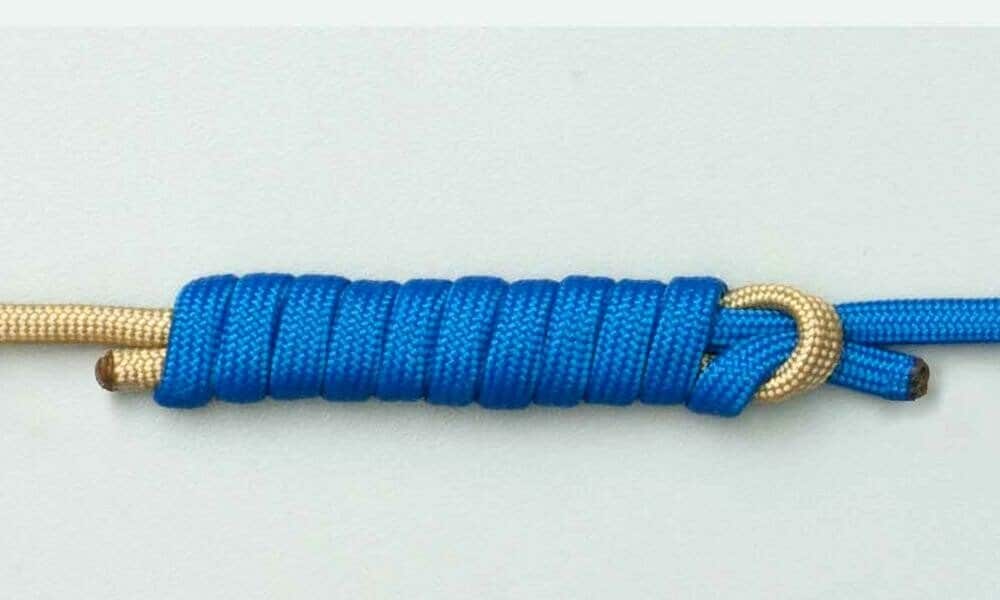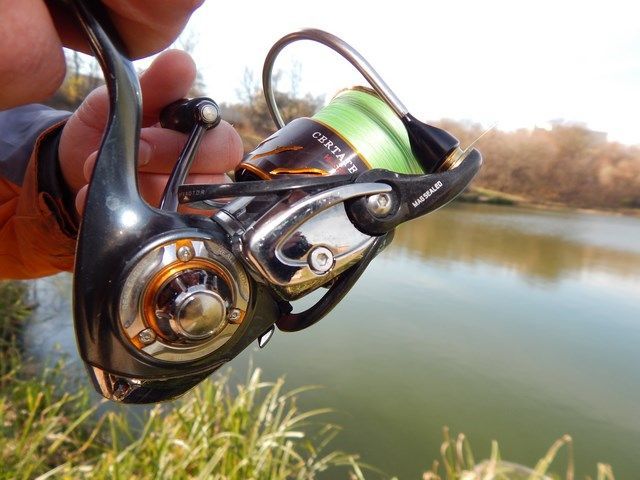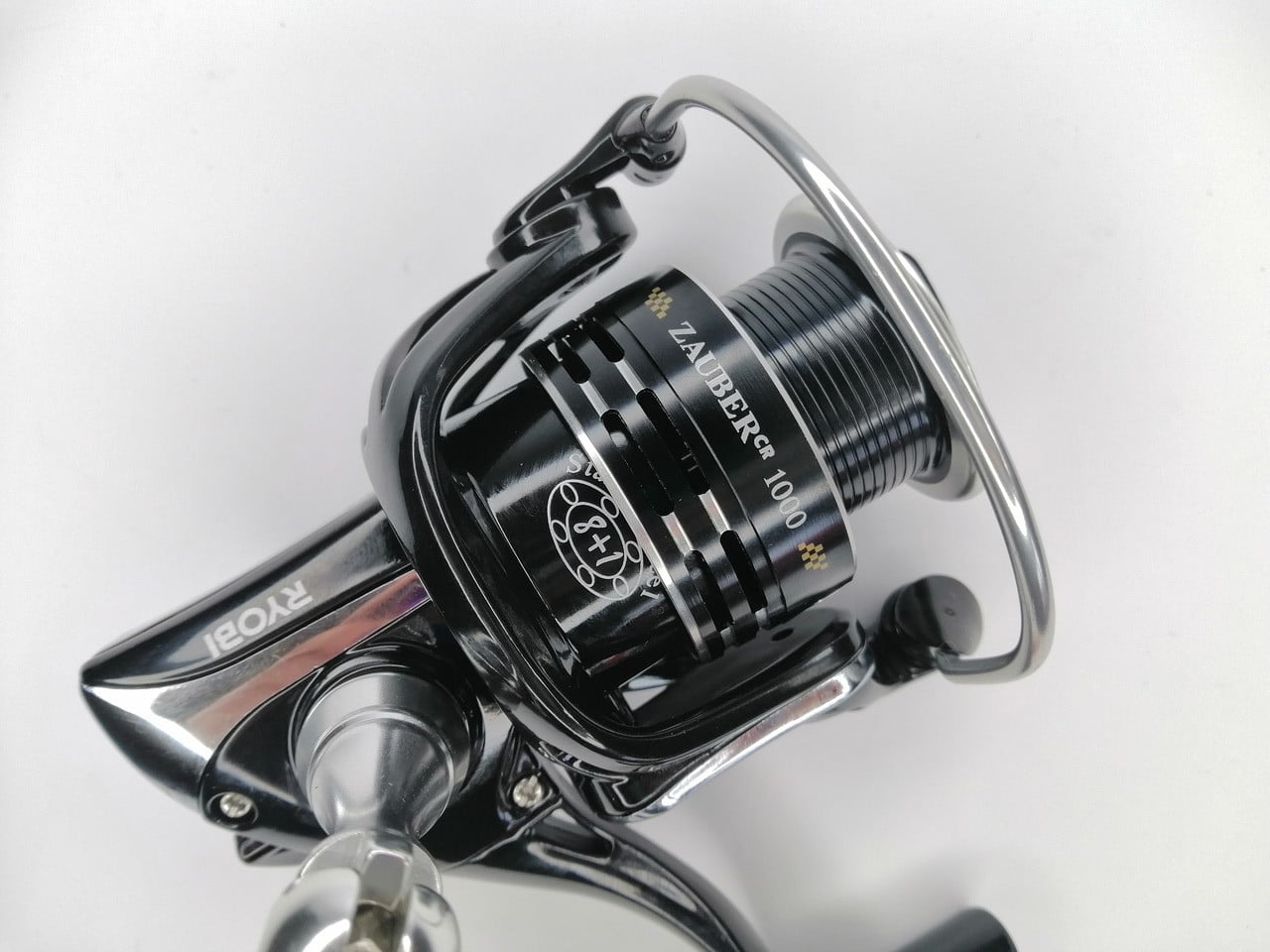In the life of every fisherman, there come times when you need to make a responsible decision: whether to change the main thread when breaking completely to a new one, or take both ends of the fishing line and tie them together. Of course, the first option is much more costly, and besides, not every angler has everything they need to install new fishing equipment with them, so the option with a knot will be most relevant. The choice of a knot is an important decision, which directly affects the strength of the tackle and its effectiveness during fishing. This article will consider one of the best knots for tying both braids with line and line with fluorocarbon, of different diameters and combinations. This is the famous Albright Knot for all anglers.
- Characteristics of the Albright node and its purpose
- How to knit a classic Albright knot: analysis of the structure of the knot, as well as a diagram of its creation
- When to tie a braid
- Albright for tying braided shock leader to monofilament line
- When it is necessary to tie the same line between fluorocarbon and monofilament
- When you need to tie braid and fishing line
- Improved Albright node – visual diagram and video instruction
- Поделиться ссылкой:
Characteristics of the Albright node and its purpose
The Albright knot is a reliable assistant for the angler in case of an emergency during fishing: a break in a line or the need to connect two threads that are different in nature and diameter (for example, when tying a
shock leader or knitting a
fluorocarbon leash for a spinning tackle) is not an easy task. which albright knot is the best solution.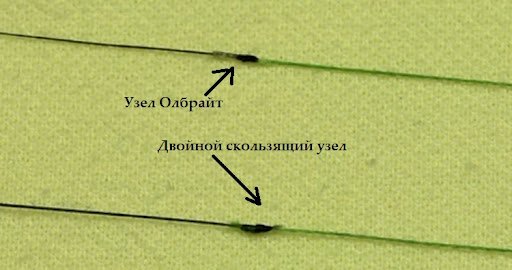
It is assumed that the Albright knot was created in America, which is not at all surprising, because it is the Americans who are fans of fly fishing and paid carp fishing, which is practically indispensable without this knot.
The knot itself has an oblong shape and in its shape resembles a double knot of a uni, but at the same time Albrite has a greater strength, which is close to 100%.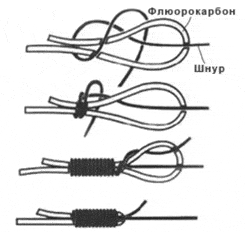

How to knit a classic Albright knot: analysis of the structure of the knot, as well as a diagram of its creation
It’s time to get acquainted with the structure of the node in more detail. It has a good lingering feature and also gives off tremendous energy when tightened. That is why, before tying, it is necessary to moisten both threads with water, and then the knot itself, before the final strokes of tightening. In order to tie the Albright knot, you need to take both ends of the thread (main thread and leash or shock leader) and make a loop from the coarsest, thickest one. Then the thinner part of the rig is used. It needs to be threaded into the resulting loop and then about 5-8 turns around the line itself, but without pulling the thread out of the loop. After that, you need to take the remaining end of the line and stretch it again into the loop.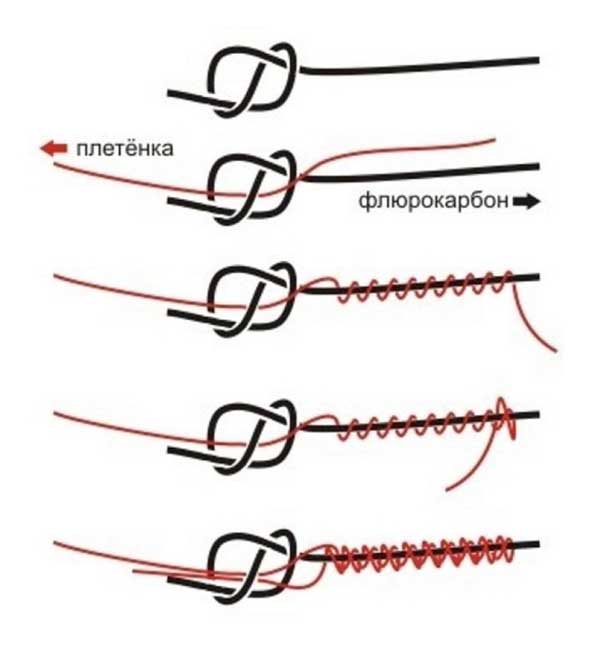
But it is not recommended to do too many turns, because this increases the volume of the knot, and this unpleasantly affects the passage of the thread through the rings of the rod.
Here is another illustrative detailed scheme for creating this node: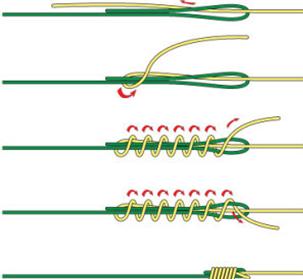
When to tie a braid
When tying the braid with an Albright knot, no questions should arise. It is permissible to tie both the same and different in diameter braided cords. But at the same time, it is desirable to have a difference in diameter of no more than 0.6 mm, which is almost always done. By itself, the braid is strong and therefore you have to work with its much smaller size than with a line. The braid, when wetted, does not burn out another, so you can safely use this knot. About 5-6 turns around the thicker braided thread should be sufficient.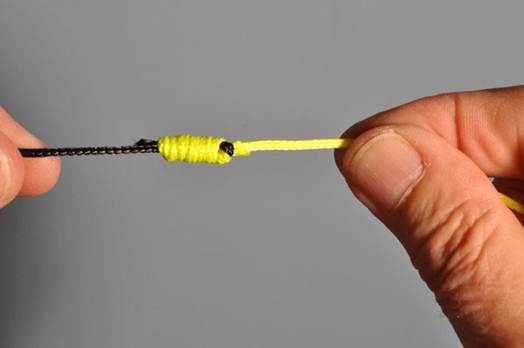
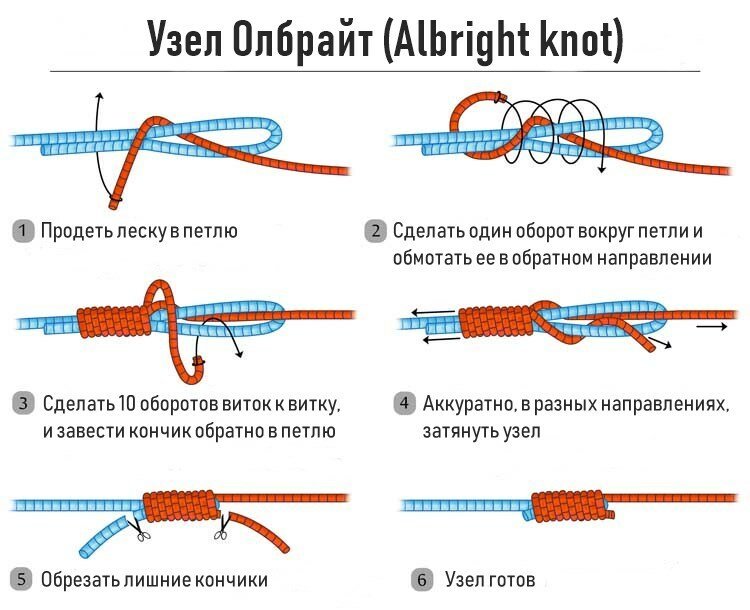
Albright for tying braided shock leader to monofilament line
There are some nuances to be aware of when it comes to mounting a shock leader and tying him in with Albright. Firstly, the shock leader is often made from thicker materials, so it will be important to choose the right braid size. Its diameter should not exceed the diameter of the monofilament by more than 0.3-0.4 mm, because the braid itself is stronger and even a shock leader made of braids equal to the diameter of the monofilament will do its job perfectly and take on the load when casting heavy tackle and playing heavy fish.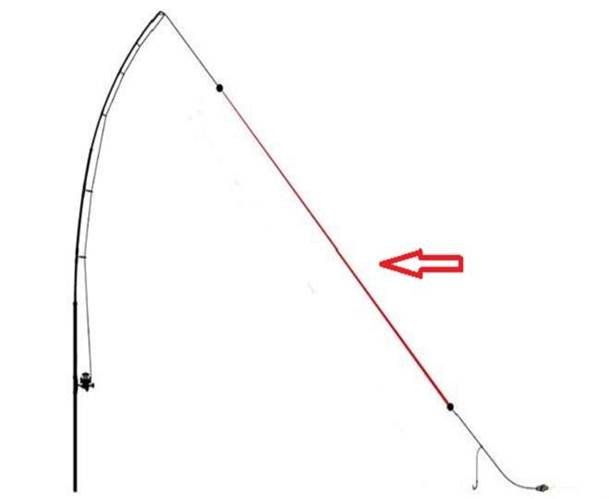
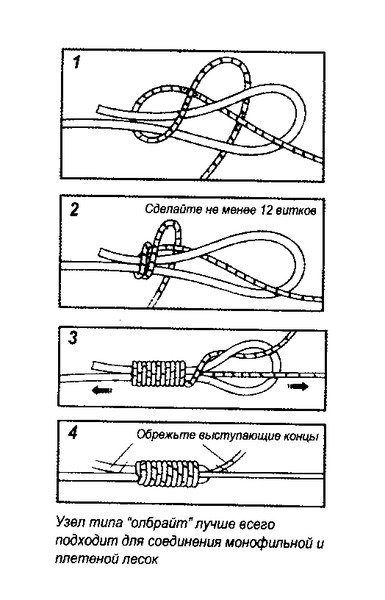
When it is necessary to tie the same line between fluorocarbon and monofilament
There is little difference when tying fluorocarbon and monofilament together, so we will consider tying the same fishing line, as well as fluor and monofilament at one point. The only difference from tying fluorocarbon to fluorocarbon and monofil to monofile is that monofil is more susceptible to deformation, therefore, when tying it, it is recommended not to use lines of too different diameters, and also not to make the knot too bulky due to the huge number of turns.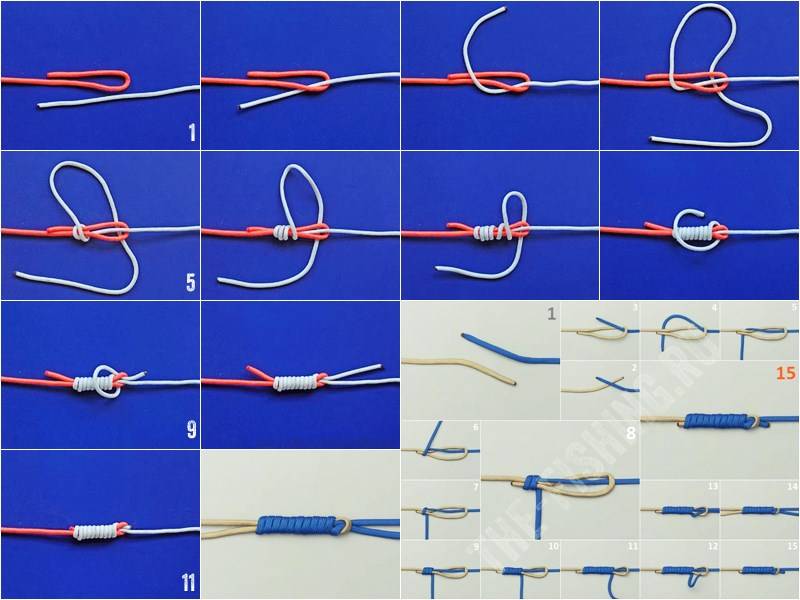

When you need to tie braid and fishing line
The Albright knot is also great for tying braided and monofilament lines. Braid and line are often combined among anglers. Often, the choice falls on the main thread in the form of a braid and a leash or a shock leader using a fishing line that is thicker in diameter. Here it is necessary to remember again that the braid easily burns the fishing line, so you should not choose a thick thread. The fishing line, in turn, can also damage the cord, but this happens quite rarely, and if the fishing line does not exceed 0.3 mm in diameter, then there is nothing to worry about.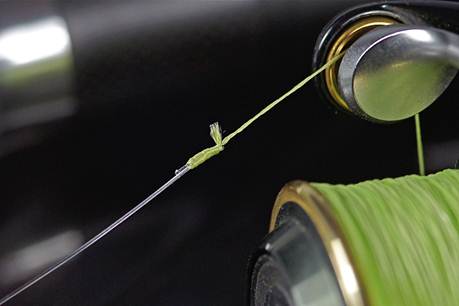
be / P9dGBAiYqJ4
It is recommended to lubricate the knot thoroughly when tying and to avoid damage that can be caused by both threads to each other.
Improved Albright node – visual diagram and video instruction
So now it’s time to consider the equally popular version of the Albright node. The improved Albright knot is very similar to the classic design, but it has a couple of features. First of all, the improved knot has greater strength and the degree of load on it when fishing, but at the same time it is half the size of the classic knot. It is more bulky due to additional turns. But at the same time, it is often used when fishing with a shock leader with the hope of catching large prey. There he copes with a bang, and large spinning rings are able to make up for such a small defect.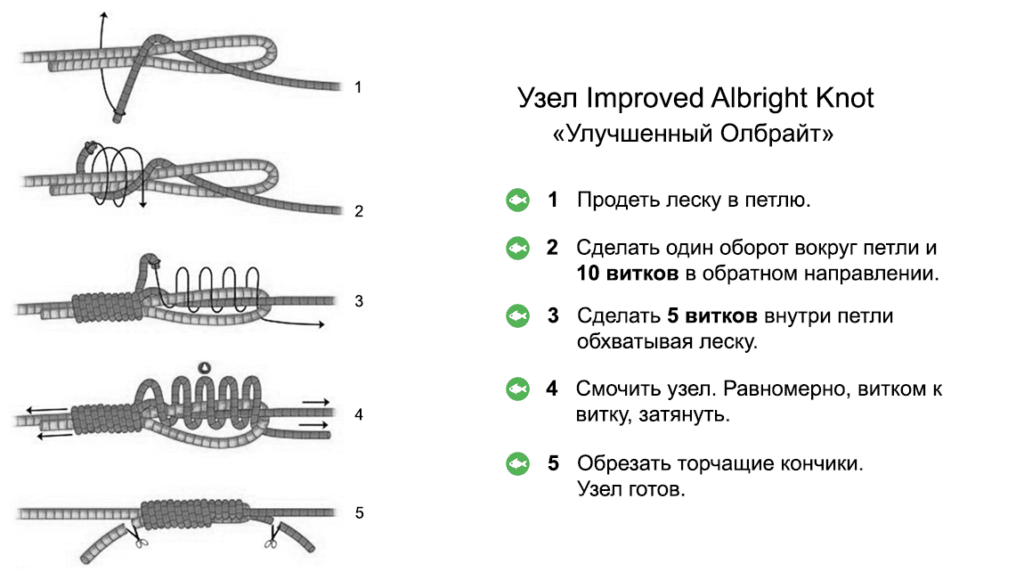
- Always follow your tying technique . Just one wrong turn into the wrong loop can create the wrong knot or even dissolve it.
- For greater strength, the knot can be coated with a thin layer of glue or varnish . So it will be better to slip out of the spool and ring, without catching and stopping another line flying off the reel during casting.
- It is recommended to wet the knot more than once as it ties . So it will be possible to tie it with minimal deformation and damage to the fishing line.
- These complex and large knots are best done after a workout . Shoelaces and small strings are best for this.
- It is not recommended to bind together materials whose diameter diverges by more than 0.5 mm.
